How To Create A Chatbot with Python & Deep Learning In Less Than An Hour by Jere Xu
A Simple Guide To Building A Chatbot Using Python Code
To start off, you’ll learn how to export data from a WhatsApp chat conversation. The call to .get_response() in the final line of the short script is the only interaction with your chatbot. And yet—you have a functioning command-line chatbot that you can take for a spin.
In this Telegram bot tutorial, I’m going to create a Python chatbot with the help of pyTelegramBotApi library. After each change you make and test, remember to save your progress by clicking on the “Save” button, so the machine learning model can train. To build our chatbot, we’ll be using Python, so make sure you have Python installed on your system. You can download and install Python from the official website.
Step 1 – User Templates
Once the dependence has been established, we can build and train our chatbot. We will import the ChatterBot module and start a new Chatbot Python instance. If so, we might incorporate the dataset into our chatbot’s design or provide it with unique chat data. A great next step for your chatbot to become better at handling inputs is to include more and better training data. If you do that, and utilize all the features for customization that ChatterBot offers, then you can create a chatbot that responds a little more on point than 🪴 Chatpot here.
We are not going to program, we are going to try to make it behave as we want by giving it some instructions. At the same time, we must also provide it with enough information so that it can do its job properly informed. As you know, a language generation model does not always give the same answers to the same inputs.
What is ChatterBot Library?
The client listening to the response_channel immediately sends the response to the client once it receives a response with its token. Next, run python main.py a couple of times, changing the human message and id as desired with each run. You should have a full conversation input and output with the model. Finally, we need to update the main function to send the message data to the GPT model, and update the input with the last 4 messages sent between the client and the model. Our application currently does not store any state, and there is no way to identify users or store and retrieve chat data. We are also returning a hard-coded response to the client during chat sessions.
Now let’s cut to the chase and discover how to make a Python Telegram bot. This is nothing but a value that allows us to recognize the session in which you are working. For this purpose, I suggest that you use the ID of the user to retrieve it easily. As you can see in the Figure 4, just write in the “Try it now” form to get an answer. If you have not yet defined any intent, the system will use the fallback intent.
Don’t worry, we’ll help you with it but if you think you know about them already, you may directly jump to the Recipe section. You can also swap out the database back end by using a different storage adapter and connect your Django ChatterBot to a production-ready database. But if you want to customize any part of the process, then it gives you all the freedom to do so.
If we wanted to make a WEB application, we could use streamlit instead of panel, the code to use OpenAI and create the chatbot would be the same. This method acts as long polling technology (you make a request, process the data and then start over again). To avoid reprocessing the same data, it’s recommended to use the offset parameter. A lot of methods require additional parameters (while using the sendMessage method, for example, it’s necessary to state chat_id and text). The parameters can be passed as a URL query string, application/x–urlencoded, and application-json (except for uploading of files).
However, the size of images affects the overall performance of an application and its usability. This website is using a security service to protect itself from online attacks. The action you just performed triggered the security solution. There are several actions that could trigger this block including submitting a certain word or phrase, a SQL command or malformed data. We have a function which is capable of fetching the weather conditions of any city in the world.
WebSockets are a very broad topic and we only scraped the surface here. This should however be sufficient to create multiple connections and handle messages to those connections asynchronously. Lastly, the send_personal_message method will take in a message and the Websocket we want to send the message to and asynchronously send the message.
Next, install a couple of libraries in your Python environment. You can use your desired OS to build this app – I am currently using MacOS, and Visual Studio Code. Huggingface also provides us with an on-demand API to connect with this model pretty much free of charge. You can read more about GPT-J-6B and Hugging Face Inference API.
- Known as NLP, this technology focuses on understanding how humans communicate with each other and how we can get a computer to understand and replicate that behavior.
- You can also edit list_syn directly if you want to add specific words or phrases that you know your users will use.
- Then we create a new instance of the Message class, add the message to the cache, and then get the last 4 messages.
- Use the ChatterBotCorpusTrainer to train your chatbot using an English language corpus.
- We will use WebSockets to ensure bi-directional communication between the client and server so that we can send responses to the user in real-time.
- NLTK will automatically create the directory during the first run of your chatbot.
A rule-based chatbot might suffice if you want to answer FAQs. But, if you want the chatbot to recommend products based on customers’ past purchases or preferences, a self-learning or hybrid chatbot would be more suitable. The Python conversation bot is very minimal in its features, but the tutorial will surely give you an idea of what chatbots are all about and how to make one for yourself.
esigning the Chatbot
You’ll do this by preparing WhatsApp chat data to train the chatbot. You can apply a similar process to train your bot from different conversational data in any domain-specific topic. In the realm of chatbots, NLP comes into play to enable bots to understand and respond to user queries in human language. Well, Python, with its extensive array of libraries like NLTK (Natural Language Toolkit), SpaCy, and TextBlob, makes NLP tasks much more manageable. These libraries contain packages to perform tasks from basic text processing to more complex language understanding tasks.

Read more about https://www.metadialog.com/ here.

